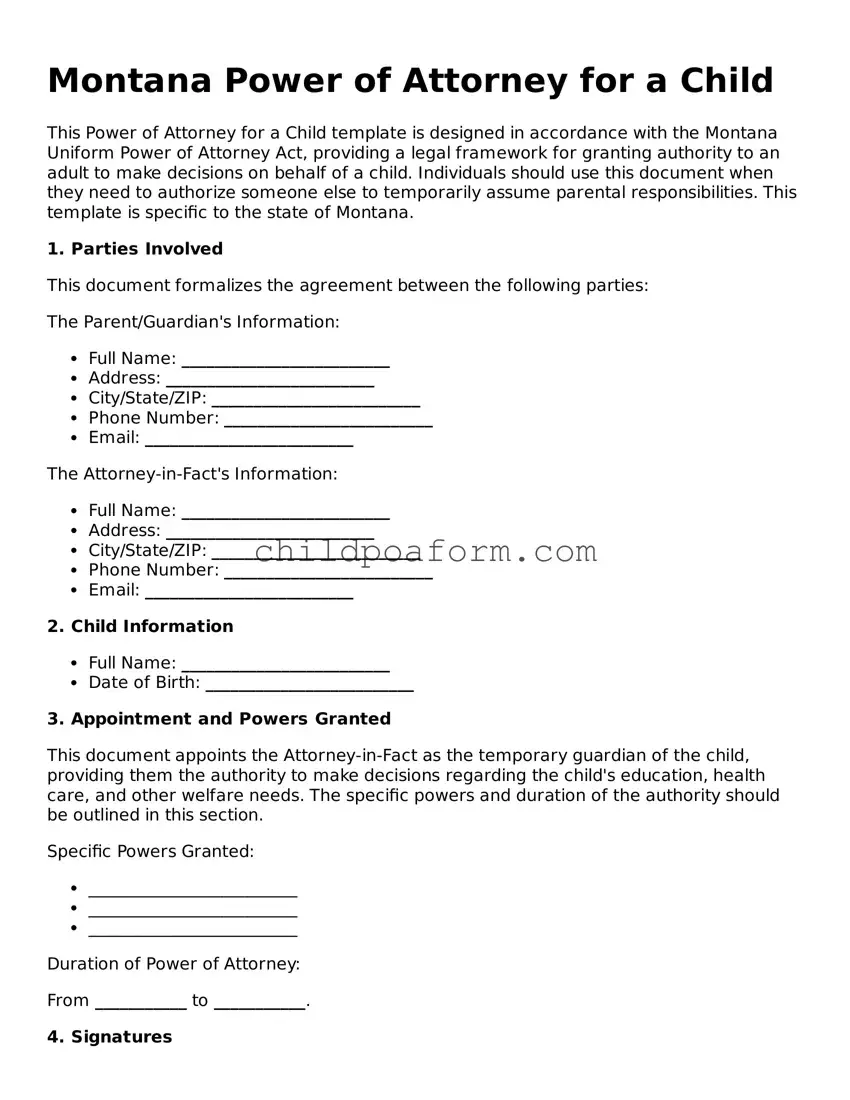Instructions on Utilizing Montana Power of Attorney for a Child
When life's unpredictable waves bring situations where you might not be present to make decisions for your child, setting up a Power of Attorney (POA) for a child in Montana can be a safety net. Whether it's a long trip without them or a health situation, having a POA ensures someone you trust can make vital decisions in your absence. Getting this document right is crucial for it to be effective and recognized under Montana law. Thus, taking the steps to fill it out properly is key. Let’s walk through the process to ensure clarity and precision, making sure your child’s welfare is safeguarded when you can’t be there.
To fill out the Montana Power of Attorney for a Child form correctly, follow these outlined steps. This will help ensure the document fully captures your wishes, providing peace of mind for you and protection for your child.
- Gather all necessary information before you start. This includes full legal names, addresses, and contact information for you, your child, and the designated attorney-in-fact (the person you are giving the power).
- Head to the section labeled "Information." Here, input the child's name, birth date, and social security number, if applicable. Ensure all details are accurate to avoid any legal discrepancies.
- Next, fill in your name (as the parent or legal guardian) along with your address and phone number. This establishes your legal connection to the child and your authority to grant the power of attorney.
- Proceed to specify the attorney-in-fact’s details—name, relationship to the child, address, and contact information. Choosing someone you trust and who knows your child well is vital, as they will be making decisions on your behalf.
- In the section designated for the terms, clearly outline the powers you are transferring. This might include decisions about education, health care, and other general welfare matters. Be as specific as possible to avoid any ambiguity.
- Specify the duration of the power of attorney. Montana law allows for a POA for a child to last up to six months, unless extended. Mark the start and end dates clearly.
- Review the form carefully. Make sure all the information provided is correct and that there are no typos or errors. This step is crucial for the document’s validity.
- Have the document signed by all necessary parties. Depending on the specifics of Montana law, this might just be you or might also need to include the child’s other parent or legal guardian.
- Finally, notarize the document if required. This process gives it legal weight. Check with local statutes or an attorney to see if notarization is needed for your Power of Attorney for a Child in Montana.
Once completed, your Power of Attorney for a Child form will serve as a legal document, allowing the person you chose to legally make decisions for your child in your stead. Keep a copy for yourself and provide one to the attorney-in-fact as well. This ensures everyone involved understands their role and responsibilities, offering you reassurance when you cannot be there for your child.
